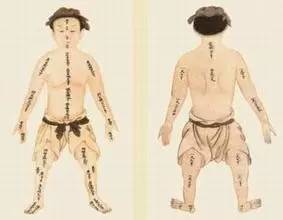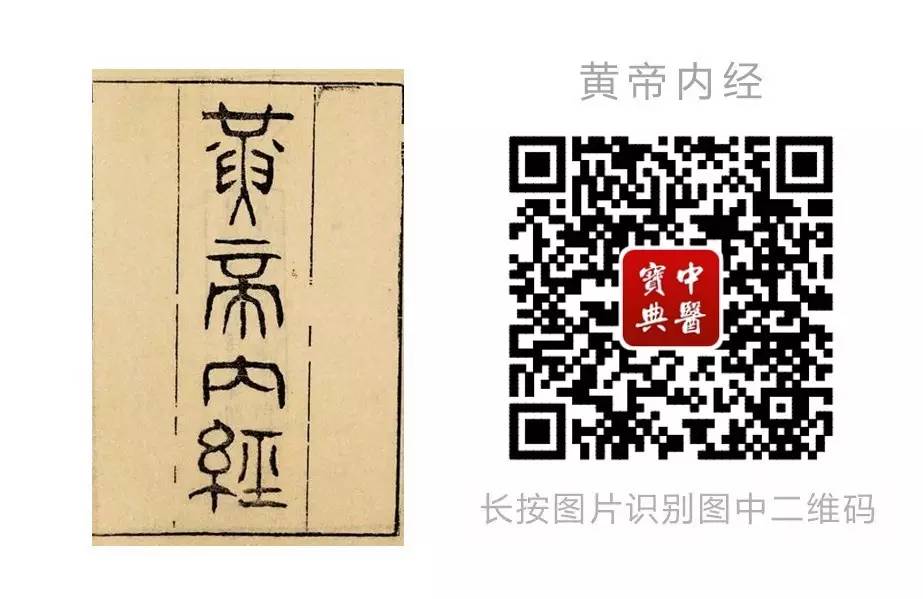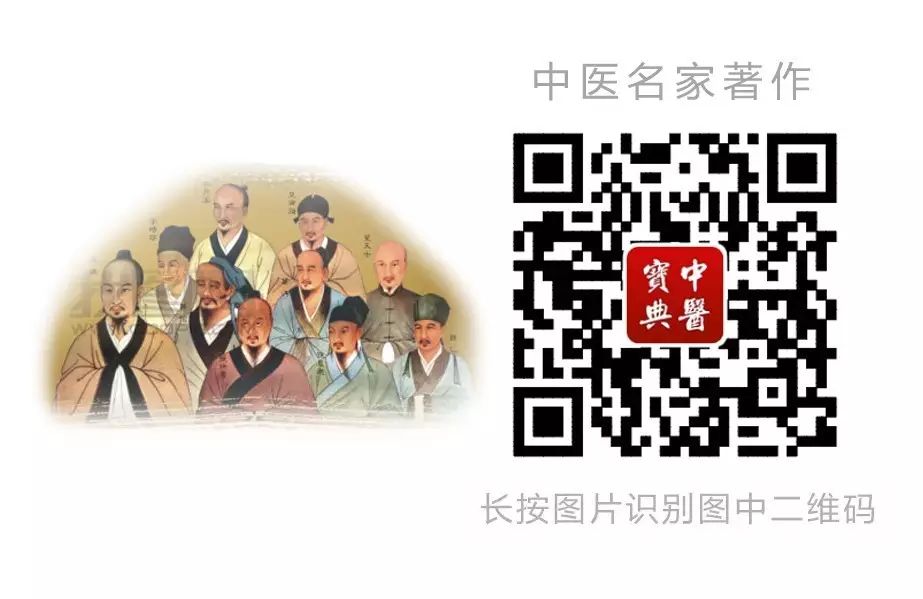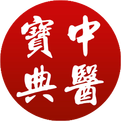

Collaterals (Bie Luo) are a term in meridian theory, referring to the larger collaterals that branch from the twelve primary meridians to adjacent meridians. Each of the twelve meridians has one collateral, along with the Ren (Conception) and Du (Governing) meridians, totaling fifteen collaterals. As stated in the “Nanjing, Chapter 23”: “There are fifteen collaterals, all originating from their source, like a ring without end, mutually irrigating, reaching the pulse at the wrist (Cunkou) and the heart, determining life and death of all diseases.”
Collaterals are also branches that emerge from the meridians, mostly distributed on the body surface. There are fifteen collaterals: one for each of the twelve meridians, plus the collaterals of the Ren and Du meridians, and the large collateral of the Spleen. Additionally, if the large collateral of the Stomach is included, it can be referred to as sixteen collaterals.
Hand Taiyin Collateral – Lieque (Lung 7)
Foot Taiyin Collateral – Gongsun (Spleen 4)
Hand Shaoyin Collateral – Tongli (Heart 5)
Foot Shaoyin Collateral – Da Zhong (Kidney 4)
Hand Jueyin Collateral – Neiguan (Pericardium 6)
Foot Jueyin Collateral – Ligou (Liver 5)
Hand Taiyang Collateral – Zhi Zheng (Small Intestine 6)
Foot Taiyang Collateral – Fei Yang (Bladder 58)
Hand Yangming Collateral – Pianli (Large Intestine 6)
Foot Yangming Collateral – Fenglong (Stomach 40)
Hand Shaoyang Collateral – Waiguan (San Jiao 5)
Foot Shaoyang Collateral – Guangming (Gallbladder 37)
Collateral of the Ren Meridian – Jiuwei (Ren 15)
Collateral of the Du Meridian – Changqiang (Du 1)
Large Collateral of the Spleen – Da Bao (Spleen 21)
The collaterals are a major part of the collateral system and serve as the main trunk, playing a leading role in the numerous small collaterals throughout the body. The smaller collaterals that branch from the collaterals are called “Sun Collaterals,” as mentioned in the “Lingshu, Pulse Measurement” where it states, “The collaterals that branch are called Sun.”

The collaterals distributed on the skin surface are called “Floating Collaterals,” as referred to in the “Lingshu, Meridians” where it states, “The collaterals that float and are commonly seen.” After branching from the larger collaterals, the pulse energy gradually becomes finer, closely connecting with the various tissues of the trunk.
The collaterals are mostly oblique branches, and their distribution has specific locations:
1. Limbs: The collaterals of the Yin meridians run in the direction corresponding to their Yang counterparts, and the collaterals of the Yang meridians run in the direction corresponding to their Yin counterparts, thus communicating between the two meridians and supplementing the deficiencies in their pathways.
2. Trunk: There are three collaterals distributed in the front, back, and sides of the body: the collaterals of the Ren Meridian are distributed in the abdomen; the collaterals of the Du Meridian run along the back, spreading to the head and branching into the Foot Taiyang Meridian; the large collateral of the Spleen is distributed in the chest and lateral areas. This strengthens the unified connection of the front, back, and sides of the body.

Basic Functions
1. Strengthening the connection between the two meridians that correspond to each other in the twelve meridians: primarily through the pathways of the Yin collaterals leading to the Yang meridians and vice versa, thus enhancing the connection between the two corresponding meridians in the limbs. Although the collaterals also enter the thoracic and abdominal cavities and connect with the internal organs, they do not have fixed collateral relationships. The focus of the collaterals is to communicate between the Yang and Yin meridians distributed on the body surface.
2. Leading the collaterals throughout the body: The “collateral points” of the twelve meridians are the gathering points and hubs of the pulse energy of the collaterals. For example, the collaterals of the Ren Meridian distributed in the abdomen have the function of leading the collaterals of various Yin meridians in the abdomen; although the collaterals of the Du Meridian originate at Changqiang, their pulse energy spreads to the head, branching into the Taiyang, thus leading the collaterals of various Yang meridians in the head and back; the large collateral of the Spleen distributed in the chest and lateral areas plays an important role in promoting the movement of Qi throughout the body. This not only strengthens the unified connection of the front, back, and sides of the body but also enhances the connection of the collaterals throughout the body.
3. Nourishing the entire body with Qi and Blood: The Sun and Floating collaterals that branch from the collaterals are distributed throughout the body, forming a network that extensively contacts the surrounding tissues, allowing the Qi and Blood circulating in the meridians to diffuse from a linear flow to a surface area, thus fully exerting their nourishing effects on the entire organism.
Circulation Locations
The distribution of the fifteen collaterals has specific locations, where the collaterals of the twelve meridians branch from below the elbows and knees in the limbs, interconnecting the corresponding Yin and Yang meridians; the collaterals of the Ren Meridian are distributed in the abdomen, the collaterals of the Du Meridian are distributed in the back, and the large collateral of the Spleen is distributed on the sides of the body. The specific circulation locations are as follows:


WeChat ID: zhongyidaxue
Theory of Zangxiang
-
Introduction to the Theory of Zangxiang
-
Formation of the Theory of Zangxiang
-
Five Zang and Six Fu, and the Extraordinary Fu
-
Five Systems of Zangxiang
-
Relationship of Zang and Fu
-
Theory of Qi Movement (Five Movements and Six Qi)
-
Theory of Essence and Qi
-
Theory of Qi, Blood, and Body Fluids and Differentiation
Theory of Yin and Yang
-
Introduction to Yin and Yang
-
Characteristics of Yin and Yang
-
Changes of Yin and Yang
-
Attributes of Yin and Yang
-
Relationship of Yin and Yang
-
Clinical Applications of Yin and Yang
-
Mutual Dependence of Yin and Yang
-
Yin and Yang Flow
Theory of the Five Elements
-
Introduction to the Five Elements in TCM
-
Methods of Classifying the Five Elements
-
Interactions of the Five Elements
-
Generative and Overcoming Relationships of the Five Elements
-
Transformations and Control of the Five Elements
-
Maternal and Child Relationships of the Five Elements
-
Guidance of the Five Elements
-
Application of the Five Elements Theory in Clinical Treatment
-
Classification Table of the Five Elements in TCM
Related Articles
-
Introduction to Traditional Chinese Medicine
-
History of Traditional Chinese Medicine
-
The Essence of Traditional Chinese Medicine Treatment
-
Fundamental Theories of Traditional Chinese Medicine (Essence Version)
-
Origins of Traditional Chinese Medicine
-
Historical Names of Traditional Chinese Medicine
-
Correspondence of the Twelve Time Periods to the Zang and Fu
-
Differentiation in TCM: “Differentiating Symptoms”
-
Differentiation of Causes: External Injury Syndromes
-
Differentiation of Causes: Dietary and Work-Rest Syndromes
-
Differentiation of Causes: Seven Emotions Syndromes
-
Differentiation of Causes: Six Excesses and Epidemic Syndromes
-
Classification of Pulse Signs and Main Diseases

